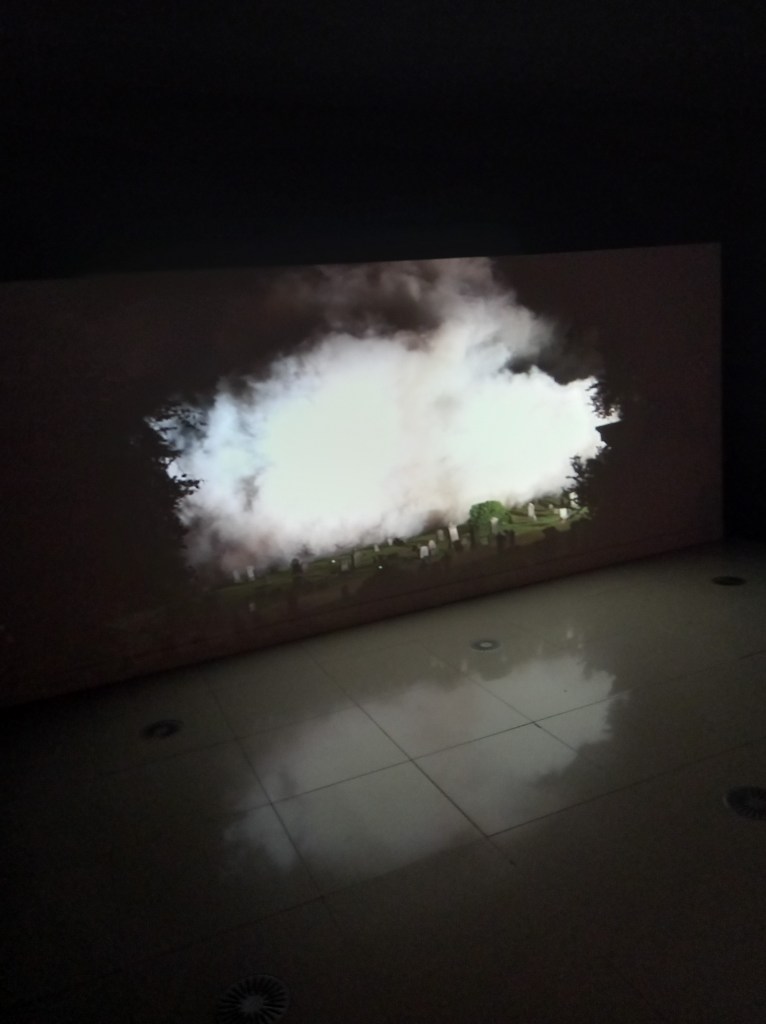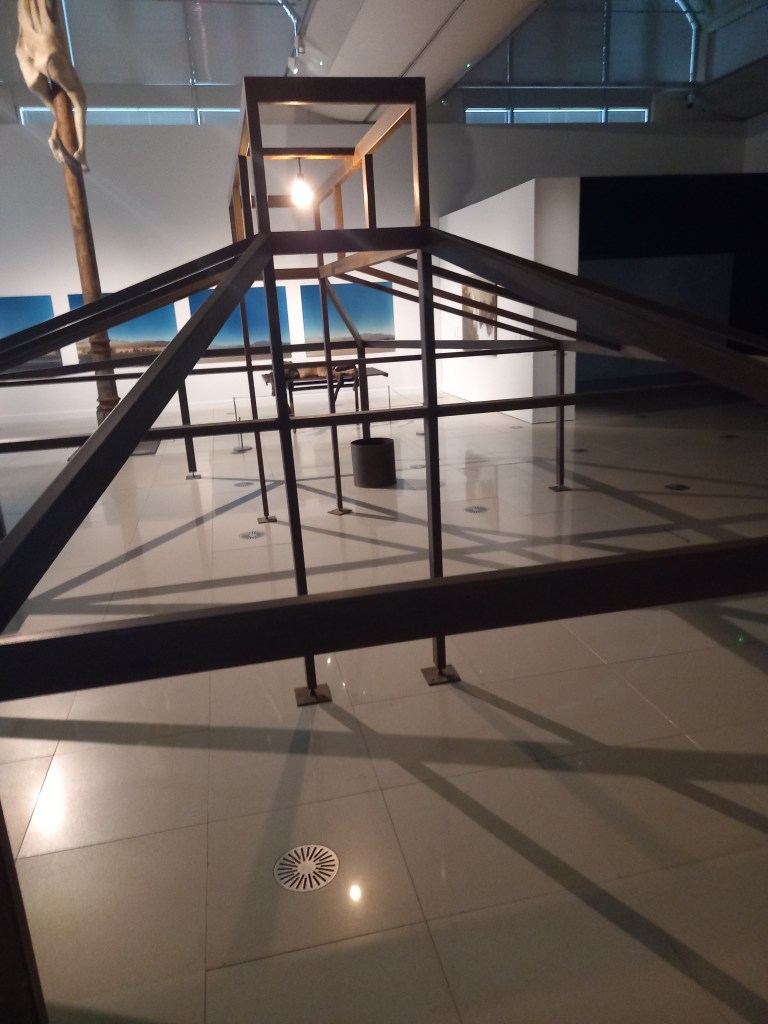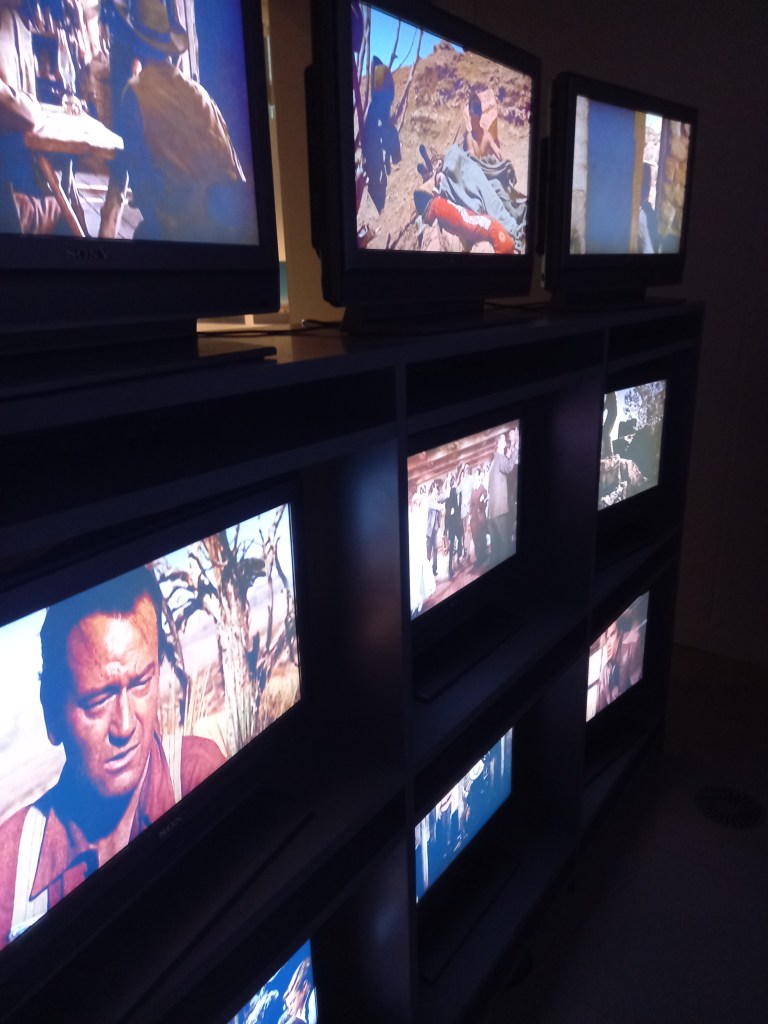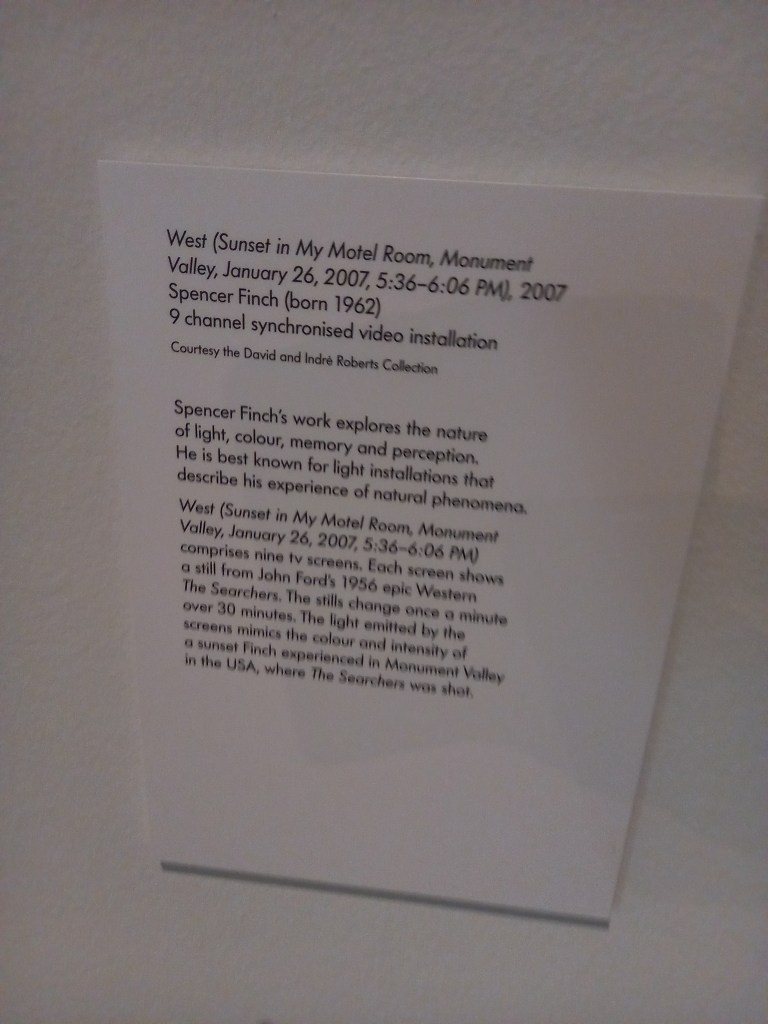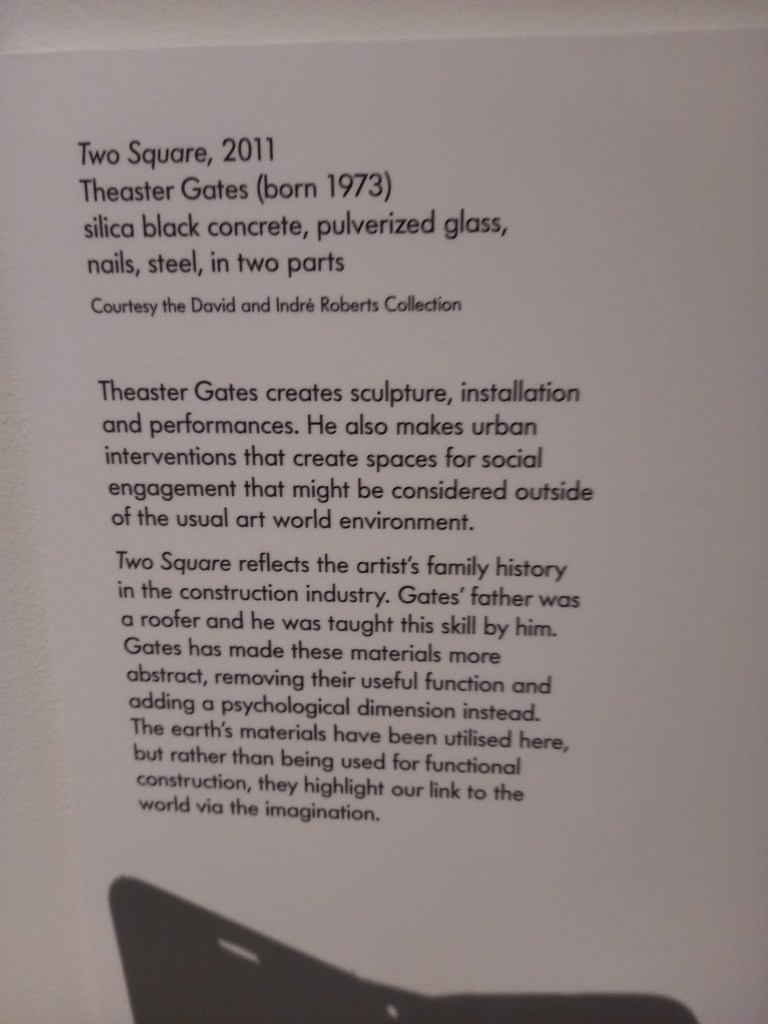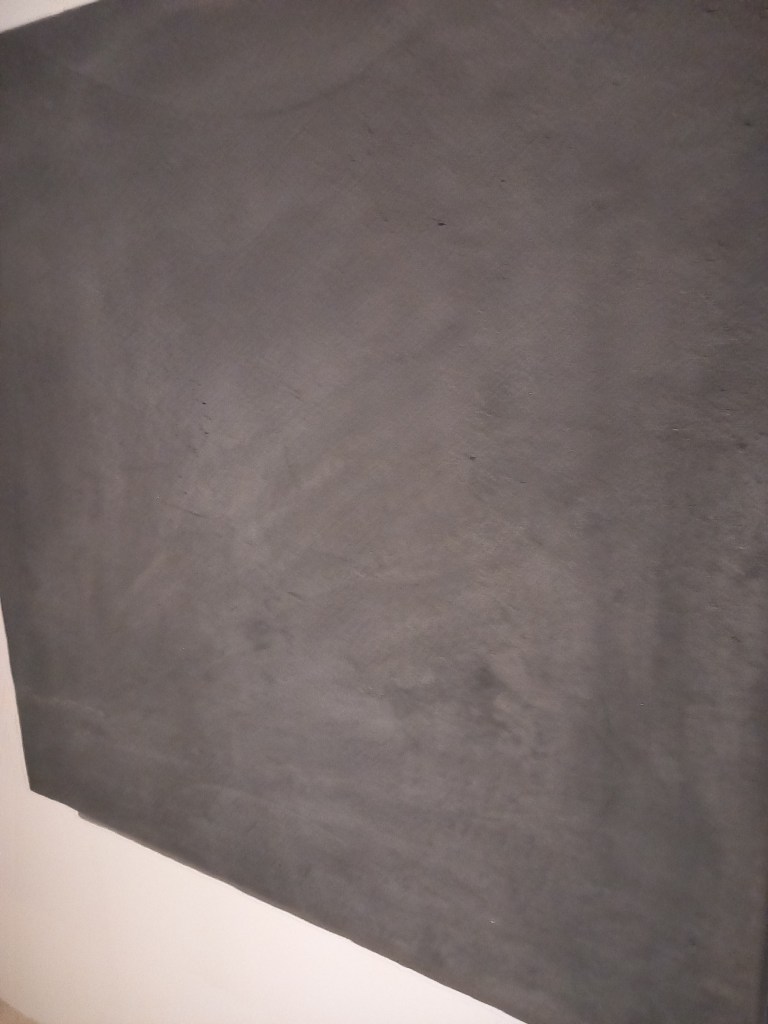I popped to Millennium galleries with Nick a fellow university student in Sheffield which is displaying Earthbound (taken from the Sheffield Museum site)
The earth is many things. Its vastness is often difficult to grasp, yet it is fundamental to our lives. It is our home and provides us with sustenance; it drives and is exploited by our labour and our economies. We are dependent on it for our survival; over the past year, many of us have found a renewed connection with it that has sustained us and brought us comfort.
Curated in partnership with the Roberts Institute of Art, Earthbound brings together works from the David and Indrė Roberts Collection, alongside examples from Sheffield’s own visual art collection, to investigate our relationship with our environment. The works on display span land art, landscape paintings, video installation, sculpture and photography, by contemporary artists including Helen Chadwick, Richard Long, Dan Holdsworth, Miroslaw Balka, Theaster Gates and Berlinde De Bruyckere.
Earthbound is framed by Sheffield’s long history of working with the natural environment and the impact the landscape has had on the life of the city; from the geography that gave rise to the 18th century steel industry to the social housing that populated the skyline during the 50s and 60s. Today, with the current climate emergency, our relationship to the ground beneath our feet and the fabric of our landscape is changing, making this a timely moment to think more deeply about what the earth is and how we live with it.

The exhibition is in a rectangular room with some exhibits on the floor, fixed to the walls or some which are video installations within their own spaces.
As you walk in I started to look at the exhibits starting on my left:

Desert Strip 1 and 1V is a series of photos enlarged in sequence of a side view of the desert giving the feeling of looking out of a side window on a car journey.
The sense of scale and the open landscape gives a feeling of escape and fluidity.
The work conjures up feelings of car journeys as a child when you could let your imagination wander just looking at the landscape unfolding in a blur.
My initial response to the title is that we are indeed earthbound and part of the planet’s laws of gravity and laws of motion and how they help make us feel free when we are not sat still on this planet always looking for new vistas and horizons.

The next picture as you walk past that exhibit is on the furthest wall The New Picturesque (Johnstone Castle) 2008.
Cyprien Gaillard has erased or covered up visible signs of human architecture thus creating a new landscape in this case it looks like a waterfall or indeed some kind of purposeful graffiti.
Cyprien Gaillard is reinventing the idea of a new picturesque by choosing what is worth painting.
Cyprien also created this video installation as pictured below which illustrates the juxtapositon of natural or manmade destruction/ruins:
Opposite the The New Picturesque is a table with a dead horse on there.
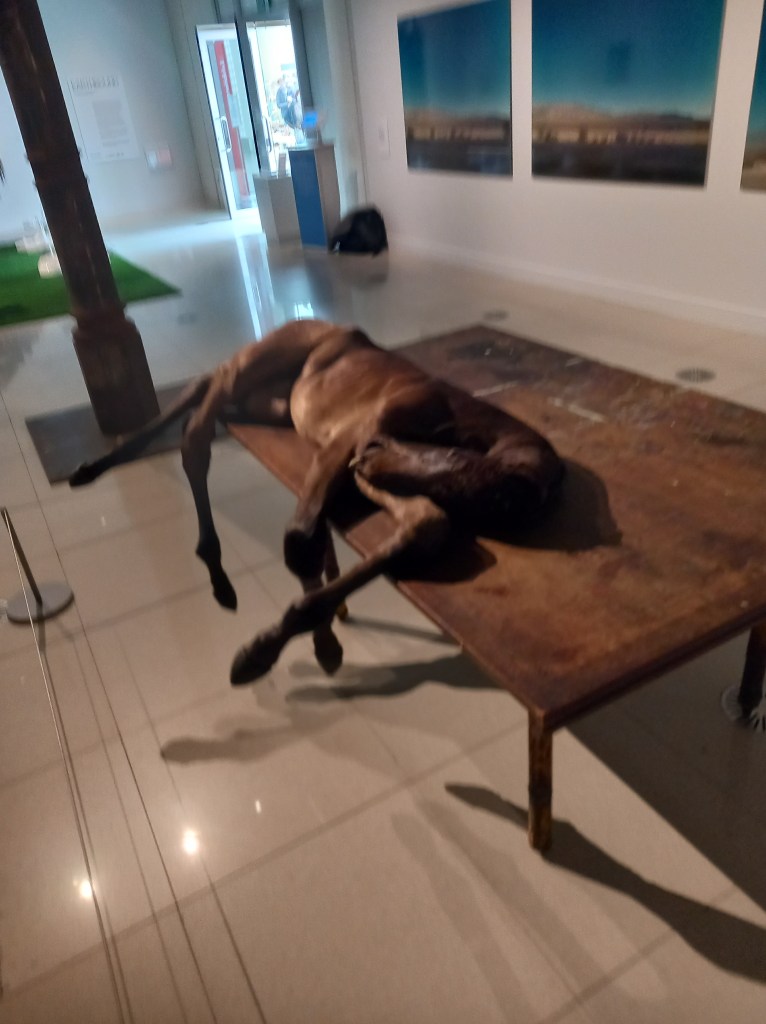
Lost II 2007 by Berlinde De Bruykere
I really like this piece which illustrates the futility of war and the casualties incurred by animal or human.
This is a stark reminder to the horses that lost their lives during these conflicts that plague human history.
I think this piece compliments another artists work in this gallery:
An interesting piece to say the least a zoo rescaled to a human scale used to entertain SS troops.
The irony that animals are an entertainment to the SS but are also treated better than their human prisoners.
The Nazis used terminology to sugarcoat their intent such as the final solution and labelling Jewish prostitutes as Joy division (used as inspiration for the seminal Manchester band).
There is something heinous about both these installations and somehow they compliment each other (the dead horse and zoo).
West (sunset in my motel room…) is an interesting installation the TVs are facing the wall creating this orange glow.
When we have the lights turned off the light from our favourite shows are comforting and that applies to watching films at the cinema.
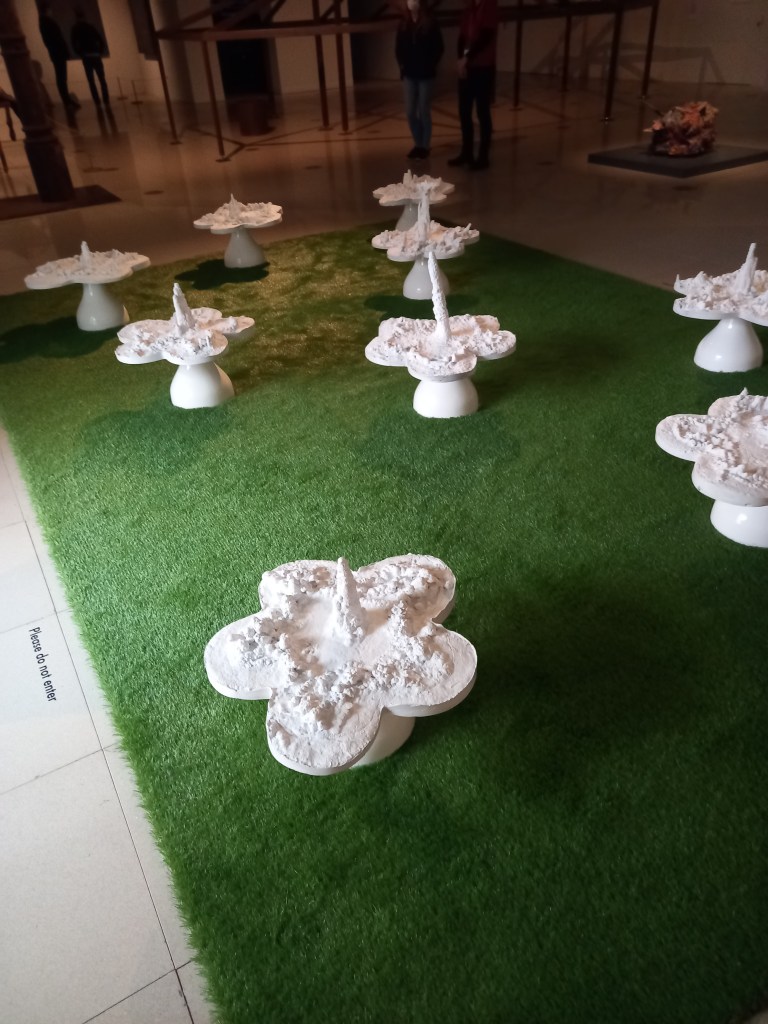
Helen Chadwick was known for “challenging stereotypical perceptions of the body in elegant yet unconventional forms.”
This installation are casts taken from the different streams that Helen and her partner created whilst urinating in snow and the patterns forming these flowers.

Barrada came across the image of this Alpine landscape in a café in Tangier where it had been installed as a wallpaper, hence the title of the work. Translating the original materiality of the peeling wallpaper into a two-dimensional composition, Barrada deceives the viewer with an image that draws on the clichés of landscape photography as a genre with defined characteristics. In this way the mountain scene looses its own connotations to become a place with no particular identity, suggesting a general idea of escapism towards exotic destinations. By bringing a landscape that originally decorated the interiors of a Moroccan café to either an art gallery, a museum or the house of a collector, Barrada is able to question how the displacement of an image might affect its meaning and change the way we look at it.
therobertsinstituteofart.com
I think it’s clever that Barrada uses the materiality of the image he is photographing to create a different narrative to the one that is offered of just an exotic locale.
The decay of the paper suggests these ideas of escape are fanciful.
This contrasts with the idyllic nature of Desert strip I to IV and it’s pursuit of freedom.
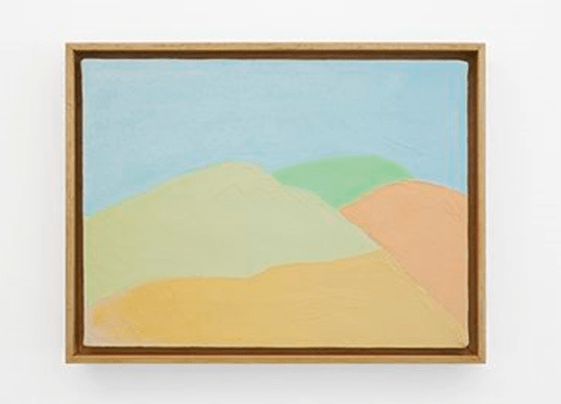
Untitled is part of Adnan’s series of thousands of works depicting Mount Tamalpais. From her home she has a view over this ancient peak, which has resulted in its presence in her work from the 1960s onwards.
‘Here her language is colour, creating abstract pastel shapes with a pallet knife that together render the natural body and its surroundings on her small canvasses. Looking at the mountain again and again involves a certain attention to nature, noticing all the slight changes with each new day. Adnan argues that lack of attention can lead to ecological catastrophe’
(Harry Burke, ‘Collection Study – Etel Adnan, Untitled’, 2015).

This diptych by Dirk Bell has an ethereal image painted over a traditional image to give the impression that some ghostly presence is taking precedence over the original narrative as both forms are breaking the frame.
A frame not dissimilar to that of the earthly plain.
Other exhibits include a piece of debris made to look like an asteroid, an aerial view of mountains and pieces of clay sorted into a manmade pattern.
Overall I enjoyed the experience of looking at different exhibits that were curated with the title earthbound in mind and our link to the environment we live in and how it shapes and informs our lives.
The exhibition made me aware of how I can utilise space in an exhibition by using the floor, installations and using concepts to convey meaning.

